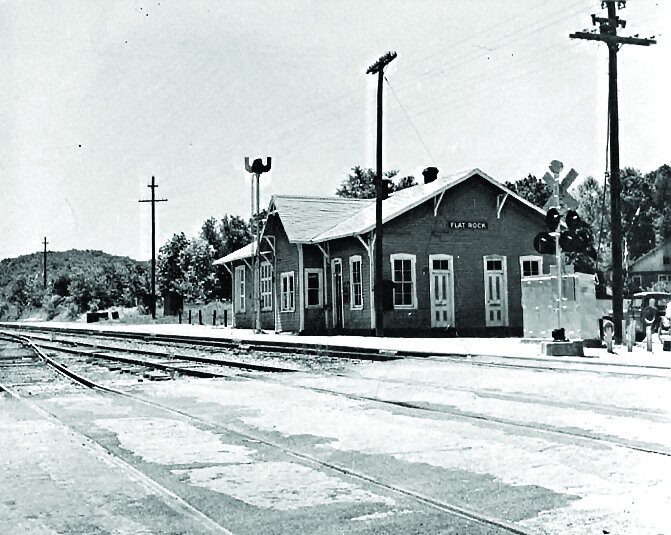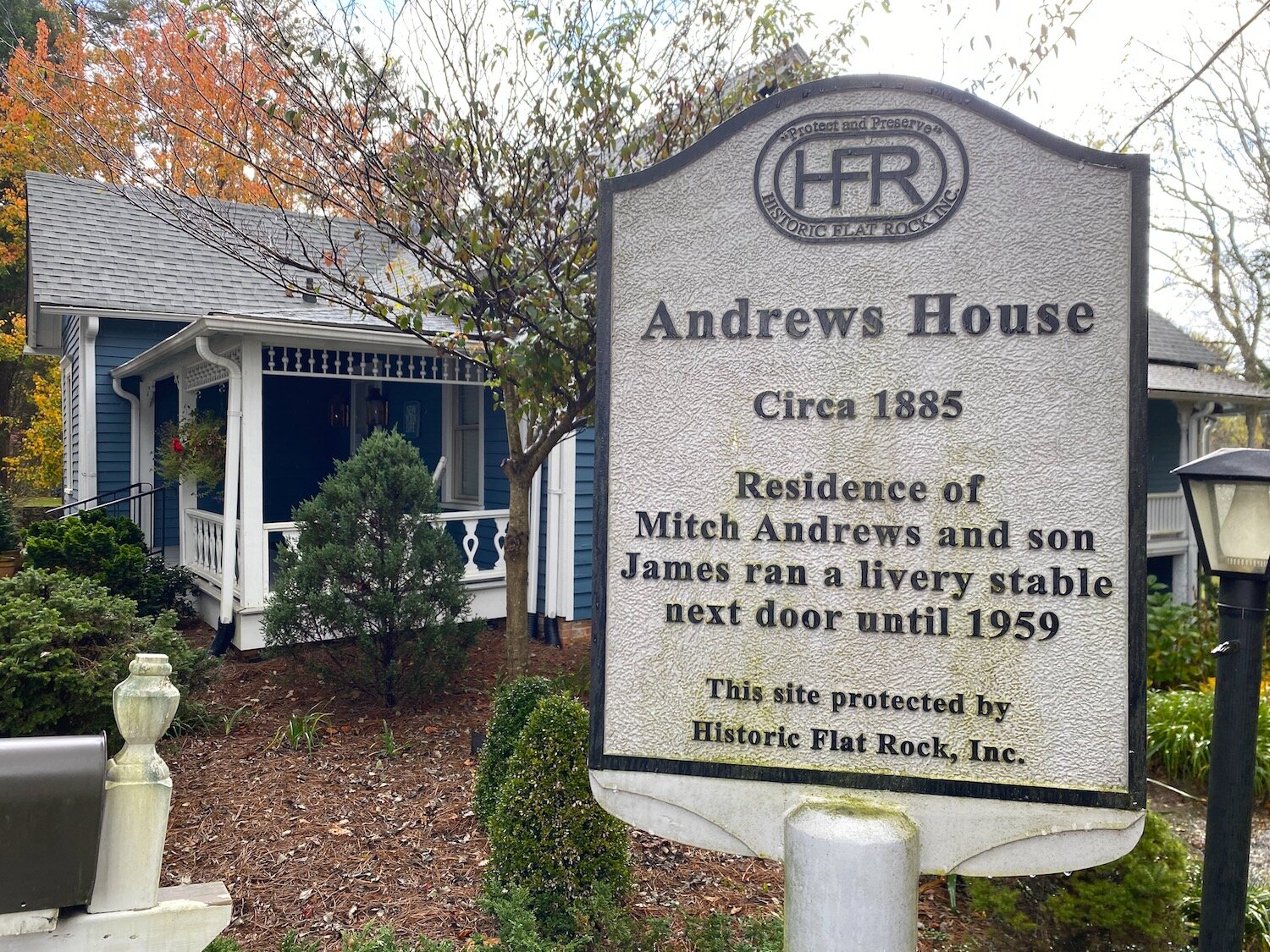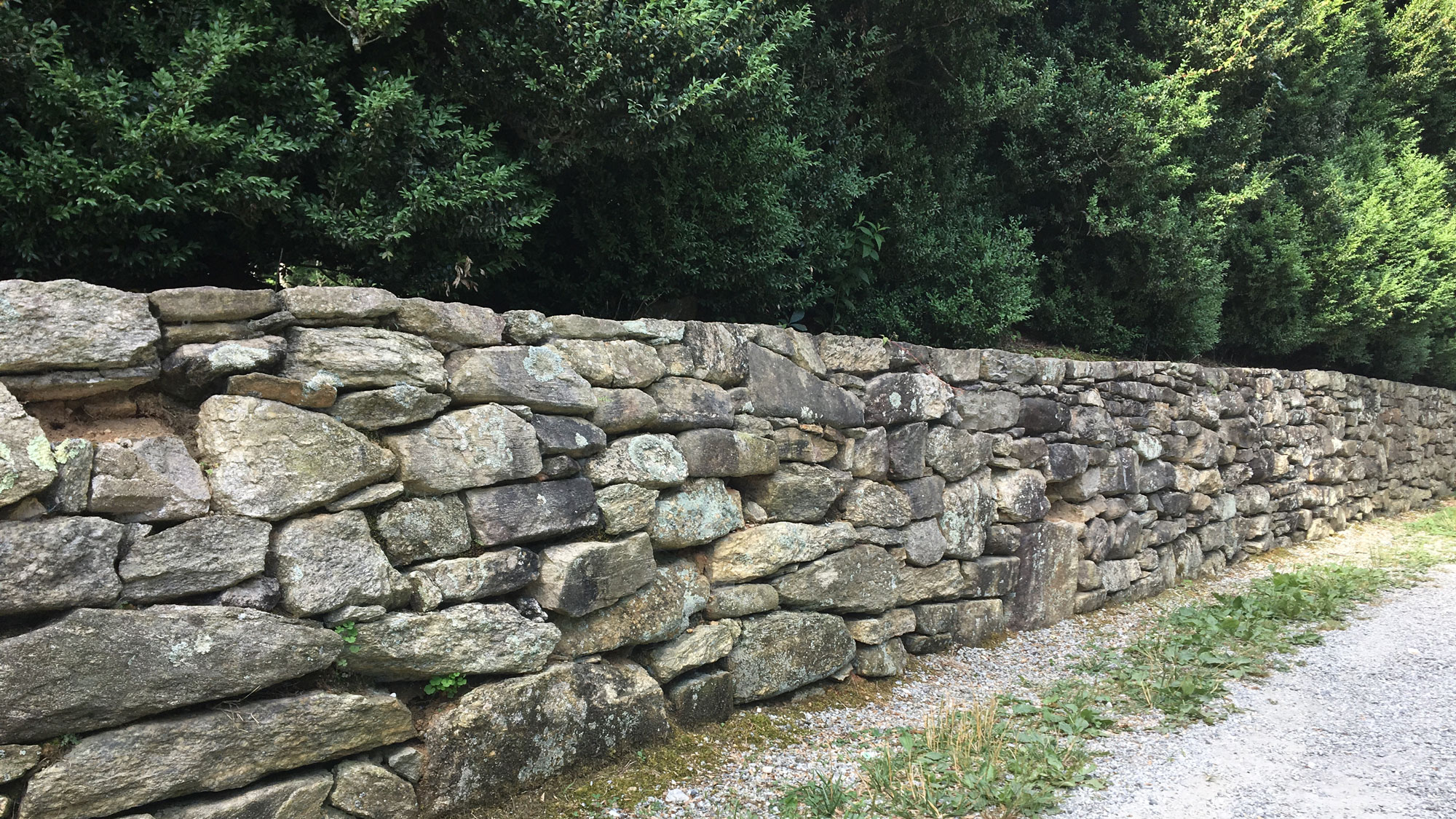Gateway to Flat Rock
/"Pick us up at the Flat Rock train station - we arrive on the 3:42 from Charleston." That was the message often received from summer visitors coming to “The Little Charleston of the Mountains.”
Getting from the Low Country to the far reaches of Western North Carolina, or "the Wilderness" as it was sometimes called, was an event in itself and one that required much planning on both ends.
The Flat Rock Train station in what is now East Flat Rock. The depot was taken down in 1958 when passenger service between Charleston and Cincinnati was discontinued.
Trains came to Flat Rock in 1879, providing a welcome alternative to the arduous, two-day carriage ride which previously had been required for persons wanting to get to Flat Rock from Greenville, South Carolina.
Track had to be laid up the steep Saluda Grade. At 5.3% it is still the steepest grade in the country east of the Rocky Mountains, needing huge engines with five sets of driving wheels to pull the cars. The Flat Rock Depot was built in the center of East Flat Rock in 1889, replacing a log dwelling that had initially served as the station.
-From Village of Flat Rock Website
A taxi service, old Flat Rock style, was a necessity. And there was one of course - very efficient, locally operated and dependable in all kinds of weather. Train service arrived here c1876, but when you got here, family and luggage in tow, it was the horse and buggy you relied on.
The railroad passed near Flat Rock approximately one and a half miles east of Memminger’s Rock Hill estate. In the midst of a forest, an area alongside the tracks was cleared for the construction of a station, which was named Flat Rock. Passengers and mail departing the train at the Flat Rock station had to travel by horseback or horse-drawn carriage into the Flat Rock settlement and to the post office located on the Buncombe Turnpike.
The route from the station to the post office followed the old Flat Rock Road, which only extended as far east as James Pringle’s Many Pines estate prior to the construction of the railroad. With the construction of the station, Perry Hoke Walker (1859-1920) purchased several hundred acres on both sides of the tracks around the station where he laid out streets and lots for a small community that became East Flat Rock. Walker built houses, operated a store, and persuaded investors to organize the Skyland Hosiery Mill on land that he set aside for industrial development. He later succeeded in having an East Flat Rock Post Office established across the tracks from the railroad station.
The road between Flat Rock and East Flat Rock was known for many years as Depot Road (present-day West Blue Ridge Road). For more than fifty years, the railroad served as a lifeline between Hendersonville and Charleston, to the degree that, in 1910, it was considered necessary to have a third station added between the one at Flat Rock and the one at Hendersonville. Six passenger trains were going each direction daily prior to the summer season. The new station, called Highland Depot, was built adjacent to the railroad tracks on the Highland Lake Club property at what is now the intersection of Highland Park Road extension and the railroad line .
National Register of Historic Places Registration Form
Historic Flat Rock, Inc. 2015
Right across Highway 225 from the Wrinkled Egg (Peace's store at the time), was the Flat Rock livery stable, owned by the Andrews family. It was quite a business! Once vacationers unpacked, got settled, and took a headcount of the little ones, they'd often go right back to the stable for riding lessons and perhaps lease a horse or two for the summer. The stable is gone now, replaced by apartment buildings, but the Andrews house, thanks to Historic Flat Rock Inc., is restored and very much part of the village scene.
The history of the cute bungalow-style house, bordering Ravenswood Lake, is of interest in itself. Thanks to local legend and good memory of Flat Rock resident Ruthie Derrick, we know the house was always brimming with children during summer vacation time, and having to hold a "grown-up's hand" while crossing the road for treats at Peace's store.
Beginning in 1911, the Carolina Special, a Southern Railway passenger line between Cincinnati and Charleston by way of Flat Rock and Hendersonville, occasionally left people behind for lack of space on the coaches. The railroad ushered in an extended period of prosperity and tremendous growth in the area, which continued nearly unabated from 1879 until the Great Depression. Passenger rail service declined significantly during the 1930s, and with increasing automobile ownership and better roadways, rail travel was soon supplanted by car traffic.
National Register of Historic Places Registration Form
Historic Flat Rock, Inc. 2015
Long after the Andrews' ownership, the historic house was owned by an animal lover, so dedicated to saving her four-legged friends, that the house had become almost an indoor free-style kennel. It needed to be saved and Rick Merrill, Historic Flat Rock VP at the time, took on the renovation project. One of the lighter moments during the renovation was when a petrified possum stared out from between the studs at the startled workers!
HFR placed a preservation easement on the renovated house and grounds so it will be protected in perpetuity, part of our pretty village. It is now the office of Dorn Associates Insurance.
—-
By Galen Reuther
Galen has called Flat Rock home for over 20 years. She is a lifelong writer of articles about things that interest her. Her book "Flat Rock" can be purchased from independent bookstores, Historic Flat Rock, Amazon, or from Galen direct at leegalen@aol.com.
Andrews House Restored, 2020.
This is the earliest picture I have of the house. Perhaps taken in the 1940s or 1950s. My guess is that is Aunt Ella on the Right. I think the person in the midDle is in a wheelchair because of some other old pictures I have seen. I don’t know who he is, butt probably a family friend. I have no idea who is on the left. - Ruthie Derrick
This is Aunt Ella, Ella Brookshire Andrews, in the side yard of the house, about 1966 to 1968.
Ruth Andrews, daughter of Mitchell and Ella Andrews, in the kitchen, about 1968. she lived in Tryon, but came to Flat Rock on the weekends when her mother and sister Louise were in residence, usually May to October.









